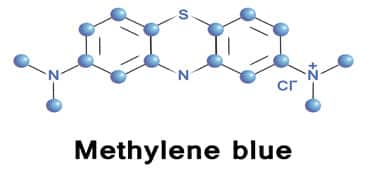
What's Hot
What's Hot
News flashes are posted here frequently to keep you up-to-date with the latest advances in health and longevity. We have an unparalleled track record of breaking stories about life extension advances.
Vitamins C and E associated with decreased inflammation in diabetics
 December 30 2015. The November-December 2015 issue of Avicenna Journal of Phytomedicine published the finding of a trial conducted by Iranian researchers of anti-inflammatory effects of vitamin C and vitamin E in male diabetics. Elevated blood sugar in overweight diabetics results in higher levels of inflammation, which contributes to insulin resistance. According to authors Mostafa Jamlan and colleagues at Ahvaz Jundishapur University of Medical Sciences, "It is possible to control insulin resistance and diabetes by modulating inflammatory cytokines and adipokines using chemical drugs or supplementary micronutrients."
December 30 2015. The November-December 2015 issue of Avicenna Journal of Phytomedicine published the finding of a trial conducted by Iranian researchers of anti-inflammatory effects of vitamin C and vitamin E in male diabetics. Elevated blood sugar in overweight diabetics results in higher levels of inflammation, which contributes to insulin resistance. According to authors Mostafa Jamlan and colleagues at Ahvaz Jundishapur University of Medical Sciences, "It is possible to control insulin resistance and diabetes by modulating inflammatory cytokines and adipokines using chemical drugs or supplementary micronutrients."
Eighty men with type 2 diabetes were randomized to receive 1000 milligrams ascorbic acid or 300 milligrams alpha-tocopherol daily for four weeks. Tumor necrosis factor-alpha (TNF-α), high-sensitivity C-reactive protein (hs-CRP), leptin, serum amyloid A (SAA, expressed in the liver in response to inflammatory stimuli), insulin resistance and other factors were assessed before and after treatment.
At the end of four weeks, both groups experienced a similar decrease in TNF-α, SAA and hs-CRP, indicating a reduction in inflammation. Leptin levels were also reduced in both groups. Vitamin C supplementation was associated with lowered insulin resistance and fasting insulin.
"To our acknowledge, this is the first report about effects of ascorbic acid and alpha-tocopherol on leptin level in type 2 diabetes patients," the authors announce. They also observe that it is the first time that oral administration of vitamins C or E was shown to decrease serum leptin levels in diabetic subjects. (Diabetics become leptin resistant, thereby exhibiting higher than normal leptin levels.)
"According to the obtained results, it seems that ascorbic acid and alpha-tocopherol could induce inhibitory effects on inflammatory markers such as SAA, TNF-α, and leptin," they conclude. "Therefore, oral consumption of ascorbic acid and alpha-tocopherol as anti-inflammatory agents could be beneficial for decreasing inflammation in type 2 diabetes patients."
—D Dye
Vitamin D tied to surgical outcome
 December 28 2015. An article published online December 14, 2015 in the journal Obesity Science & Practice reports the finding of researchers at Johns Hopkins University of an association between increased vitamin D status and improved outcome following bariatric surgery for obesity.
December 28 2015. An article published online December 14, 2015 in the journal Obesity Science & Practice reports the finding of researchers at Johns Hopkins University of an association between increased vitamin D status and improved outcome following bariatric surgery for obesity.
Leigh Peterson, PhD, MHS, and colleagues analyzed data from 932,091 bariatric surgery patients, among whom 64.8% had surgeries that occurred in northern U.S. latitudes of at least 37 degrees. They found that patients who underwent the surgery in the South and in the summer had fewer complications than those whose procedure took place in the North or winter, which suggests a protective role for vitamin D. Seventy-one percent of the cases involving an extended length of stay, defined as over three days in the hospital, occurred in northern latitudes, and extended stays were more common in winter than spring/fall or summer. Wound infection and dehiscence (rupture of a sutured wound) were also more common during winter months.
"Sun exposure is critical in the synthesis of vitamin D, so the notion that people living in less sunny northern states may suffer from vitamin D deficiency is not surprising," stated Dr Peterson, who is a nutritionist and postdoctoral research fellow at the Johns Hopkins Center for Bariatric Surgery. "What is remarkable is how closely sun exposure, vitamin D and surgical outcomes were linked."
"The growing rates of obesity and increased popularity of bariatric surgeries mean that primary care clinicians and bariatric surgeons should consider screening their patients and correcting any confirmed vitamin D deficiency," she recommended.
"Vitamin D supplementation, an easy and inexpensive treatment, may mitigate these risks and prevent adverse outcomes following bariatric surgery," the authors conclude. "A prospective study measuring preoperative 25(OH)D concentration would strengthen the case for causality in adverse
surgical outcomes."
—D Dye
Osteoporosis drug protects stem cell DNA
 December 23 2015. An article published on December 17, 2015 in Stem Cells reveals that the bisphosphonate drug zoledronate protects DNA and extends the lifespan of mesenchymal stem cells: multipotent connective tissue cells that can differentiate into a number of cell types, including bone, fat and cartilage cells.
December 23 2015. An article published on December 17, 2015 in Stem Cells reveals that the bisphosphonate drug zoledronate protects DNA and extends the lifespan of mesenchymal stem cells: multipotent connective tissue cells that can differentiate into a number of cell types, including bone, fat and cartilage cells.
Mesenchymal stem cells undergo a decline in function following expansion or exposure to radiation. Acting on the finding that osteoporosis patients treated with zoledronate lived significantly longer than untreated patients (an effect too large to be solely attributable to fracture prevention), Ilaria Bellantuono and colleagues at England's University of Sheffield sought to determine whether the drug could extend the lifespan of human stem cells in culture and, if so, if the mechanism involved protection against DNA damage.
The team found that, not only did zoledronate-treated cells survive longer following expansion and exposure to radiation, but the cells' DNA was better protected. "The drug enhances the repair of the damage in DNA occurring with age in stem cells in the bone," reported Dr Bellantuono, of the University of Sheffield's Department of Metabolism. "It is also likely to work in other stem cells too."
"Now we want to understand whether the drug can be used to delay or revert the aging in stem cells in older people and improve the maintenance of tissues such as the heart, the muscle and immune cells, keeping them healthier for longer," he added. "We want to understand whether it improves the ability of stem cells to repair those tissues after injury, such as when older patients with cancer undergo radiotherapy."
"We are hopeful that this research will pave the way for a better cure for cancer patients and keeping older people healthier for longer by reducing the risk of developing multiple age-related diseases," he concluded.
—D Dye
Comfrey compound identified as potential calorie restriction mimetic
 December 21 2015. On December 17, 2015, the journal Aging Cell reported the discovery of researchers at the University of Liverpool of a longevity benefit for allantoin, a compound that occurs in the herb comfrey. Allantoin's benefit may be due to an effect similar to that of calorie restriction, which has extended the life span of numerous organisms in experimental research.
December 21 2015. On December 17, 2015, the journal Aging Cell reported the discovery of researchers at the University of Liverpool of a longevity benefit for allantoin, a compound that occurs in the herb comfrey. Allantoin's benefit may be due to an effect similar to that of calorie restriction, which has extended the life span of numerous organisms in experimental research.
After identifying 11 potential calorie mimetic compounds whose gene expression profiles overlapped with those of calorie restriction, a team led by Dr João Pedro de Magalhães tested five of them in Caenorhabditis elegans, a roundworm that has been the subject of a significant amount of gerontologic research. Four of the compounds--rapamycin, trichostatin A, LY-294002 and allantoin--resulted in a 20% average longer mean life span as well as increased health span in treated worms.
When the compounds were tested in worms that were genetically modified to eat less, no further increase in life span was observed, suggesting to the researchers that the substances act through mechanisms related to calorie restriction.
"Testing anti-aging interventions in humans is not practical, so developing computational methods to predict longevity drugs is of great use," noted lead author and PhD student Shaun Calvert. "We have shown so far that our compounds work in worms, but studies in mammalian models are now necessary. The next step for us is to understand the mechanisms by which allantoin extends lifespan, as this could reveal new longevity pathways."
"Calorie restriction has been shown to have health benefits in humans and, while more work is necessary, our findings could potentially result in human therapies for age-related diseases," Dr de Magalhães concluded.
—D Dye
Stress fractures associated with suboptimal serum vitamin D status
 December 16 2015. An article published on September 23, 2015 in The Journal of Foot & Ankle Surgery reports the finding of a high incidence of insufficient serum vitamin D levels in people with stress fractures. Stress fractures, characterized by minute bone cracks, can occur with overuse in athletic or other activities, and are also seen in individuals with osteoporosis.
December 16 2015. An article published on September 23, 2015 in The Journal of Foot & Ankle Surgery reports the finding of a high incidence of insufficient serum vitamin D levels in people with stress fractures. Stress fractures, characterized by minute bone cracks, can occur with overuse in athletic or other activities, and are also seen in individuals with osteoporosis.
Jason R. Miller, DPM, and colleagues examined medical records from August 2011 and July 2014 for patients with lower extremity pain and suspected stress fracture. Magnetic resonance imaging scans were reviewed by musculoskeletal radiologists to confirm stress fracture diagnoses. Of 53 patients who had their serum 25-hydroxyvitamin D levels measured within three months of diagnosis, 83% had insufficient levels, defined as less than 40 nanograms per milliliter (ng/mL) by the Vitamin D Council.
"By assessing the average serum vitamin D concentrations of people with stress fractures and comparing these with the current guidelines, we wanted to encourage a discussion regarding whether a higher concentration of serum vitamin D should be recommended for active individuals," explained Dr Miller, who is the Fellowship Director of the Pennsylvania Intensive Lower Extremity Fellowship.
"Based on these findings, we recommend a serum vitamin D level of at least 40 ng/mL to protect against stress fractures, especially for active individuals who enjoy participating in higher impact activities," he recommended. "This correlates with an earlier study of 600 female Navy recruits who were found to have a twofold greater risk of stress fractures of the tibia and fibula with a vitamin D level of less than 20 ng/mL compared with females with concentrations above 40 ng/mL"
"However, vitamin D is not the sole predictor of a stress fracture and we recommend that individuals who regularly exercise or enjoy participating in higher impact activities should be advised on proper and gradual training regimens to reduce the risk of developing a stress fracture," Dr Miller noted.
—D Dye
Apigenin shows promise as brain booster
 December 14 2015. On December 10, 2015 the journal Advances in Regenerative Biology published the discovery of Brazilian researchers of an ability of the flavonoid apigenin, which occurs in parsley, red pepper and other plant foods, to improve neuron formation and connectivity. The study is the first to demonstrate the effect apigenin directly in human cells as well as to provide an explanation for its effects.
December 14 2015. On December 10, 2015 the journal Advances in Regenerative Biology published the discovery of Brazilian researchers of an ability of the flavonoid apigenin, which occurs in parsley, red pepper and other plant foods, to improve neuron formation and connectivity. The study is the first to demonstrate the effect apigenin directly in human cells as well as to provide an explanation for its effects.
Stevens K. Rehens and colleagues evaluated the effects of apigenin in human stem cells. They observed an increase in the number of neural progenitor cells and synapses (which enable the transmission of impulses between brain cells) in treated versus untreated cells. "Strong connections between neurons are crucial for good brain function, memory consolidation and learning", noted Dr Rehen, who is a neuroscientist at the D'Or Institute for Research and Education (IDOR) and Federal University of Rio de Janeiro.
The team found that estrogen receptor antagonists 1 and 2 suppressed apigenin's effects, leading to the conclusion that apigenin acts through estrogen receptor signaling. While estrogen has been associated with a protective effect against disorders of the brain, including Alzheimer's disease, estrogen therapies have been associated with risks among some individuals—a fact that renders the development of alternative therapies of vital interest.
"We show a new path for new studies with this substance," Dr Rehen remarked. "Moreover, flavonoids are present at high amounts in some foods and we can speculate that a diet rich in flavonoids may influence the formation of neurons and the way they communicate within the brain."
—D Dye
Methylene magic
 December 11 2015. A study reported on December 10, 2015 in Aging Cell reveals an antiaging effect for methylene blue, a compound that has various medical uses that include the treatment urinary tract infections and more.
December 11 2015. A study reported on December 10, 2015 in Aging Cell reveals an antiaging effect for methylene blue, a compound that has various medical uses that include the treatment urinary tract infections and more.
Kan Cao, PhD, and colleagues at the University of Maryland examined the effects of methylene blue in cells afflicted with progeria—a disease characterized by accelerated aging. Progeria is caused by a defect in a gene that produces the protein lamin A that resides inside the nucleus of the cell, near the nuclear membrane. Healthy cells perform an edit to each new lamin A molecule that does not occur in progeria-afflicted cells, resulting in interference with the nuclear membrane as a result of bulges and deformations. Progeroid cells also have defects in their mitochondria, which are organelles within the cells that produce energy.
"It seems that methylene blue rescues every affected structure within the cell," reported Dr Cao. "When we looked at the treated cells, it was hard to tell that they were progeria cells at all. It's like magic."
"We have repeated these experiments many times and have not seen a single one fail," added lead author Zheng-Mei Xiong of the Department of Cell Biology and Molecular Genetics. "This is such an exciting result with so much potential, both for progeria and normal aging. Methylene blue is common and inexpensive. It is fully water soluble and nontoxic."
"So far, we have done all of our work in stem cell lines," Dr Cao noted. "It is critical to see whether the effect extends to whole animals. We also want to see if methylene blue can repair specific effects of progeria in various cell types, such as bone, skin, cardiovascular cells and others. Further down the line, other groups might begin human clinical trials. It's very exciting."
—D Dye
Testosterone deprivation linked to Alzheimer's disease risk
 February 20, 2016. The February 20, 2016 issue of the Journal of Clinical Oncology published the results of a study which found a risk of Alzheimer's disease that was significantly higher among men who were prescribed androgen deprivation therapy (ADT) for prostate cancer compared to those who did not receive ADT.
February 20, 2016. The February 20, 2016 issue of the Journal of Clinical Oncology published the results of a study which found a risk of Alzheimer's disease that was significantly higher among men who were prescribed androgen deprivation therapy (ADT) for prostate cancer compared to those who did not receive ADT.
"We wanted to contribute to the discussion regarding the relative risks and benefits of ADT, and no one had yet looked at the association between ADT and Alzheimer's disease," stated lead author Kevin T. Nead, MD, MPhil, of the department of Radiation Oncology at the Perelman School of Medicine at the University of Pennsylvania, and a fellow at the Leonard Davis Institute of Health Economics.
Dr Nead and colleagues evaluated medical records from the Stanford health system and New York's Mt Sinai Hospital for 16,888 prostate cancer patients, among whom 2,397 received ADT. Men treated with ADT were matched with control patients who did not receive the therapy. It was discovered that men who received ADT were 66-88% more likely to be diagnosed with Alzheimer's disease over follow-up compared to non-treated controls. Longer ADT duration was associated with more than double the risk of Alzheimer's. Similar findings were obtained when patients from the two hospital systems were separately analyzed.
"Based on the results of our study, an increased risk of Alzheimer's disease is a potential adverse effect of ADT, but further research is needed before considering changes to clinical practice," Dr Nead noted. "It's hard to determine the precise amount of increased risk in just one study and important to note that this study does not prove causation. But considering the already-high prevalence of Alzheimer's disease in older men, any increased risk would have significant public health implications."
—D Dye
How weight loss reverses diabetes
 December 7 2015. Researchers at Newcastle University believe they have discovered why calorie restricted diets can reverse type 2 diabetes. The reason may be as simple as losing a gram of fat from the pancreas, thereby enabling the organ to resume proper function. The finding, published online on December 1, 2015 in Diabetes Care, was announced at the World Diabetes Congress held in Vancouver.
December 7 2015. Researchers at Newcastle University believe they have discovered why calorie restricted diets can reverse type 2 diabetes. The reason may be as simple as losing a gram of fat from the pancreas, thereby enabling the organ to resume proper function. The finding, published online on December 1, 2015 in Diabetes Care, was announced at the World Diabetes Congress held in Vancouver.
The discovery was the result of a trial involving 18 type 2 diabetics and 9 nondiabetics scheduled for gastric bypass surgery. Insulin response to glucose infusion and other factors were measured before and eight weeks after the surgery. Pancreatic and liver triglycerides were assessed by magnetic resonance imaging.
After the surgery, weight loss and fat mass change were similar in all subjects, however pancreatic triglycerides remained unchanged in nondiabetics while decreasing in the diabetic group. Insulin response to glucose infusion was also unchanged in the nondiabetics while normalizing in those with type 2 diabetes.
"For people with type 2 diabetes, losing weight allows them to drain excess fat out of the pancreas and allows function to return to normal," lead researcher Roy Taylor explained. "So if you ask how much weight you need to lose to make your diabetes go away, the answer is one gram! But that gram needs to be fat from the pancreas. At present the only way we have to achieve this is by calorie restriction by any means -- whether by diet or an operation."
"This new research demonstrates that the change in level of fat in the pancreas is related to the presence of type 2 diabetes in a patient," he added. "The decrease in pancreas fat is not simply related to the weight loss itself. It is not something that might happen to anyone whether or not they had diabetes. It is specific to type 2 diabetes."
—D Dye
Lifestyle changes, meditation linked to increased telomerase gene expression
 December 4 2015. A study appearing on November 16, 2015 in PLOS ONE found that both meditation and lifestyle changes implemented by hypertensive African Americans stimulated genes involved in the production telomerase, the enzyme responsible for maintaining telomere length. Telomeres, that cap the ends of chromosomes, shorten with aging of the cell. Longer telomere length has been associated with reduced risks of cardiovascular disease, hypertension and premature mortality.
December 4 2015. A study appearing on November 16, 2015 in PLOS ONE found that both meditation and lifestyle changes implemented by hypertensive African Americans stimulated genes involved in the production telomerase, the enzyme responsible for maintaining telomere length. Telomeres, that cap the ends of chromosomes, shorten with aging of the cell. Longer telomere length has been associated with reduced risks of cardiovascular disease, hypertension and premature mortality.
The study included 48 African Americans with stage 1 hypertension who were assigned to either an extensive health education program that included lifestyle modification advice for high blood pressure or a basic education program for hypertension combined with stress-reducing meditation technique instruction for 16 weeks. Blood pressure was assessed and blood samples were evaluated for the expression of telomerase genes at the beginning and end of the study.
Although the lifestyle modification group had implemented more changes by the study's conclusion, both groups had significant increases in telomerase gene expression and decreased blood pressure. "This pilot study in African Americans suggests stress reduction and lifestyle modifications may reduce blood pressure with an increase in telomerase," coauthor Otelio Randall, MD, of Howard University College of Medicine concluded.
"The finding that telomerase gene expression is increased, and that this is associated with a reduction in blood pressure in a high-risk population, suggests that this may be a mechanism by which stress reduction improves cardiovascular health," commented coauthor Robert Schneider, MD, FACC. "These findings are very encouraging for prevention. They show that both the Transcendental Meditation technique and active lifestyle modification can contribute to heart health."
"The result is valuable new information, relevant both to cardiovascular disease and to the molecular mechanisms involved in Transcendental Meditation," senior author John Fagan concluded.
—D Dye
Magnesium helps prevent amyloid beta aggregation in experimental research
 December 2 2015. The December 2015 issue of The FASEB Journal reports the discovery of researchers in China of an ability of ionic magnesium (Mg2+) to help reduce the deposition of amyloid beta in a mouse model of Alzheimer's disease.
December 2 2015. The December 2015 issue of The FASEB Journal reports the discovery of researchers in China of an ability of ionic magnesium (Mg2+) to help reduce the deposition of amyloid beta in a mouse model of Alzheimer's disease.
For their research, Pu Wang, PhD, of Northeastern University in Shenyang, China and colleagues tested the effect of magnesium threonate, which is believed to penetrate the blood brain barrier, on normal mice and mice that overexpressed a gene that increased amyloid beta production while decreasing the influx of magnesium into the brain. Among those that received magnesium, the researchers observed a reduction in amyloid beta aggregation and associated cognitive decline, accompanied by an elevation in brain levels of ionic magnesium.
"We hope that our findings will help improve clinical practice pertinent to the optimal administration of Mg2+ for delaying or even preventing the onset of AD," commented Dr Wang, of Northeastern University's College of Life and Health Sciences. "Moreover, we hope to extend our experimental models to other disorders such as severe craniocerebral injury, bronchial asthma, chronic pulmonary heart disease, arrhythmia and myocardial necrosis, etc. and identify more targets of Mg2+ and strategies for treating these disorders."
"The good news about this work is that if it holds up in humans, magnesium is a common element that is readily available," commented Gerald Weissmann, MD, who is Editor-in-Chief of The FASEB Journal. "The bad news, of course, is that what works in mice does not always turn out so well in people. At the same time, even if magnesium ions do not work out for people with Alzheimer's, this report will help researchers learn how to slow the development amyloid plaques, a hallmark of the disease."
—D Dye

